
Health coverage company Centene (NYSE:CNC) reported Q4 CY2024 results topping the market’s revenue expectations, with sales up 3.4% year on year to $40.81 billion. Its non-GAAP profit of $0.80 per share was 62.2% above analysts’ consensus estimates.
Is now the time to buy Centene? Find out by accessing our full research report, it’s free.
Centene (CNC) Q4 CY2024 Highlights:
- Revenue: $40.81 billion vs analyst estimates of $39.1 billion (3.4% year-on-year growth, 4.4% beat)
- Adjusted EPS: $0.80 vs analyst estimates of $0.49 (62.2% beat)
- Adjusted EBITDA: $520 million vs analyst estimates of $218.4 million (1.3% margin, significant beat)
- Adjusted EPS guidance for the upcoming financial year 2025 is at least $7.25, with expectations averaging $7.32
- Operating Margin: 0.4%, in line with the same quarter last year
- Free Cash Flow was -$741 million compared to -$6 million in the same quarter last year
- Customers: 28.6 million, down from 28.64 million in the previous quarter
- Market Capitalization: $32.73 billion
"Despite a year of unprecedented industry headwinds, Centene demonstrated significant operational improvements, strengthened our talent bench, and delivered on our financial commitments in 2024," said Chief Executive Officer of Centene, Sarah M. London.
Company Overview
Founded in 1984 as a single health plan to serve those in need, Centene (NYSE:CNC) today serves under-insured and uninsured families to provide primary care and hospitalization to behavioral health and pharmacy benefits healthcare coverage.
Health Insurance Providers
Upfront premiums collected by health insurers lead to reliable revenue, but profitability ultimately depends on accurate risk assessments and the ability to control medical costs. Health insurers are also highly sensitive to regulatory changes and economic conditions such as unemployment. Going forward, the industry faces tailwinds from an aging population, increasing demand for personalized healthcare services, and advancements in data analytics to improve cost management. However, continued regulatory scrutiny on pricing practices, the potential for government-led reforms such as expanded public healthcare options, and inflation in medical costs could add volatility to margins. One big debate among investors is the long-term impact of AI and whether it will help underwriting, fraud detection, and claims processing or whether it may wade into ethical grey areas like reinforcing biases and widening disparities in medical care.
Sales Growth
Reviewing a company’s long-term sales performance reveals insights into its quality. Any business can have short-term success, but a top-tier one grows for years. Thankfully, Centene’s 16.9% annualized revenue growth over the last five years was impressive. Its growth beat the average healthcare company and shows its offerings resonate with customers, a helpful starting point for our analysis.
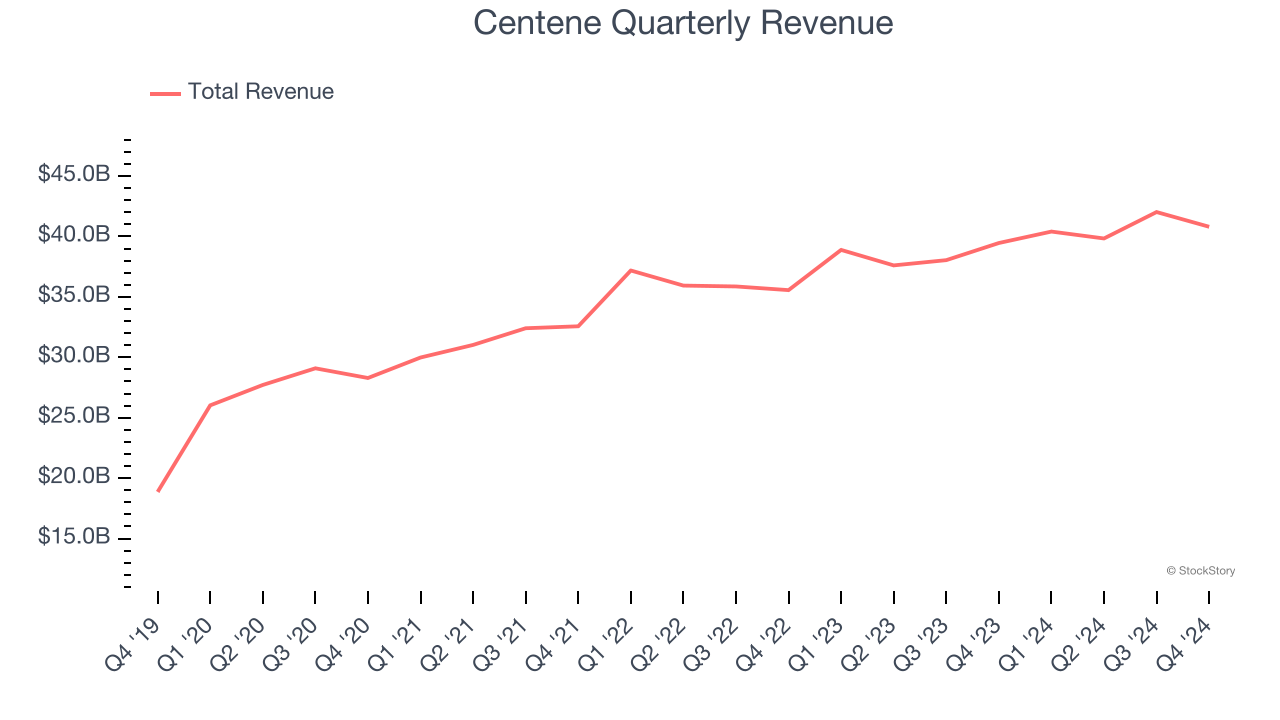
We at StockStory place the most emphasis on long-term growth, but within healthcare, a half-decade historical view may miss recent innovations or disruptive industry trends. Centene’s recent history shows its demand slowed significantly as its annualized revenue growth of 6.2% over the last two years is well below its five-year trend. 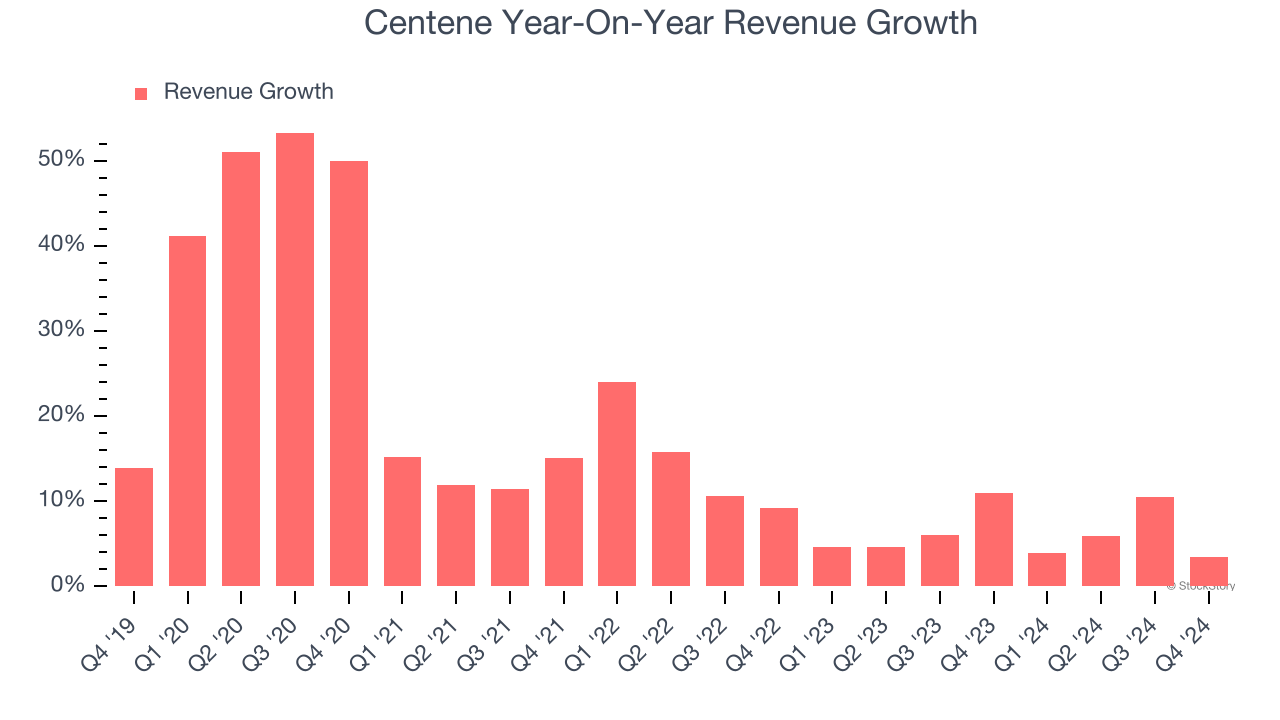
We can dig further into the company’s revenue dynamics by analyzing its number of customers, which reached 28.6 million in the latest quarter. Over the last two years, Centene’s customer base averaged 3.6% year-on-year growth. Because this number is lower than its revenue growth, we can see the average customer spent more money each year on the company’s products and services. 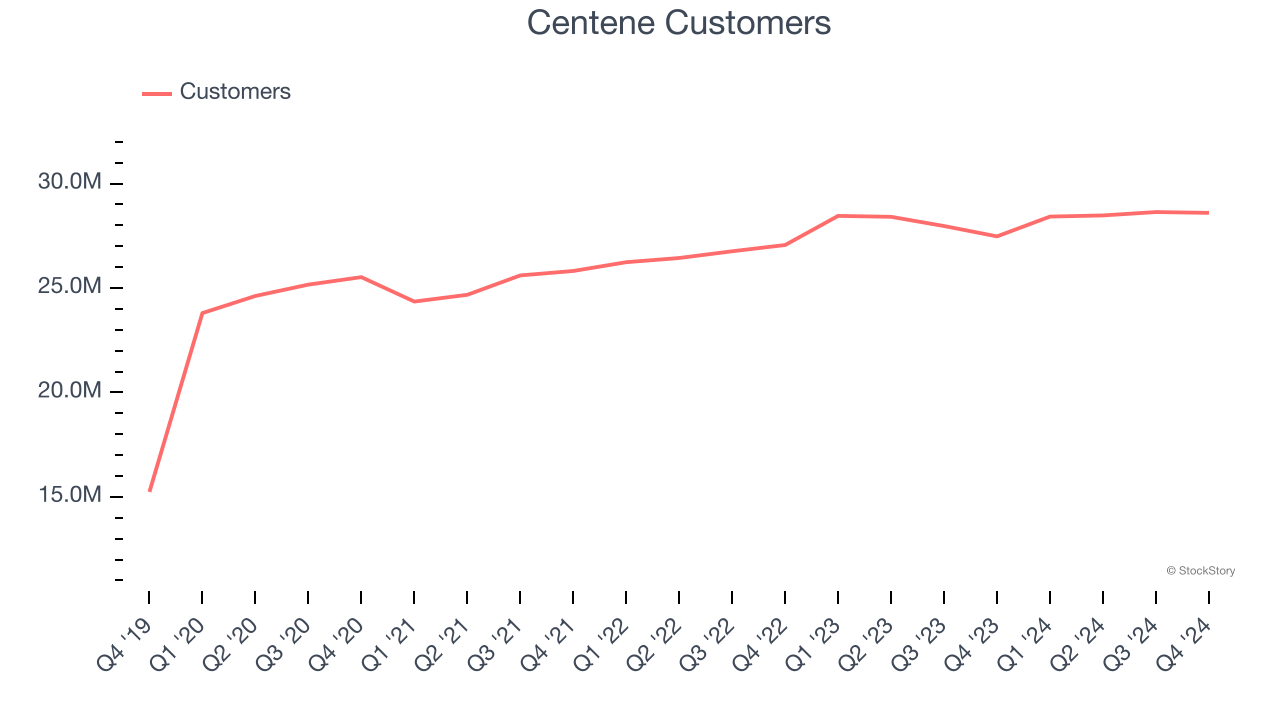
This quarter, Centene reported modest year-on-year revenue growth of 3.4% but beat Wall Street’s estimates by 4.4%.
Looking ahead, sell-side analysts expect revenue to grow 4% over the next 12 months, a slight deceleration versus the last two years. This projection is underwhelming and suggests its products and services will see some demand headwinds. At least the company is tracking well in other measures of financial health.
Unless you’ve been living under a rock, it should be obvious by now that generative AI is going to have a huge impact on how large corporations do business. While Nvidia and AMD are trading close to all-time highs, we prefer a lesser-known (but still profitable) stock benefiting from the rise of AI. Click here to access our free report one of our favorites growth stories.
Adjusted Operating Margin
Centene was profitable over the last five years but held back by its large cost base. Its average adjusted operating margin of 3.2% was weak for a healthcare business.
Looking at the trend in its profitability, Centene’s adjusted operating margin decreased by 2 percentage points over the last five years. A silver lining is that on a two-year basis, its margin has stabilized. We still like Centene and are hopeful it can right the ship.
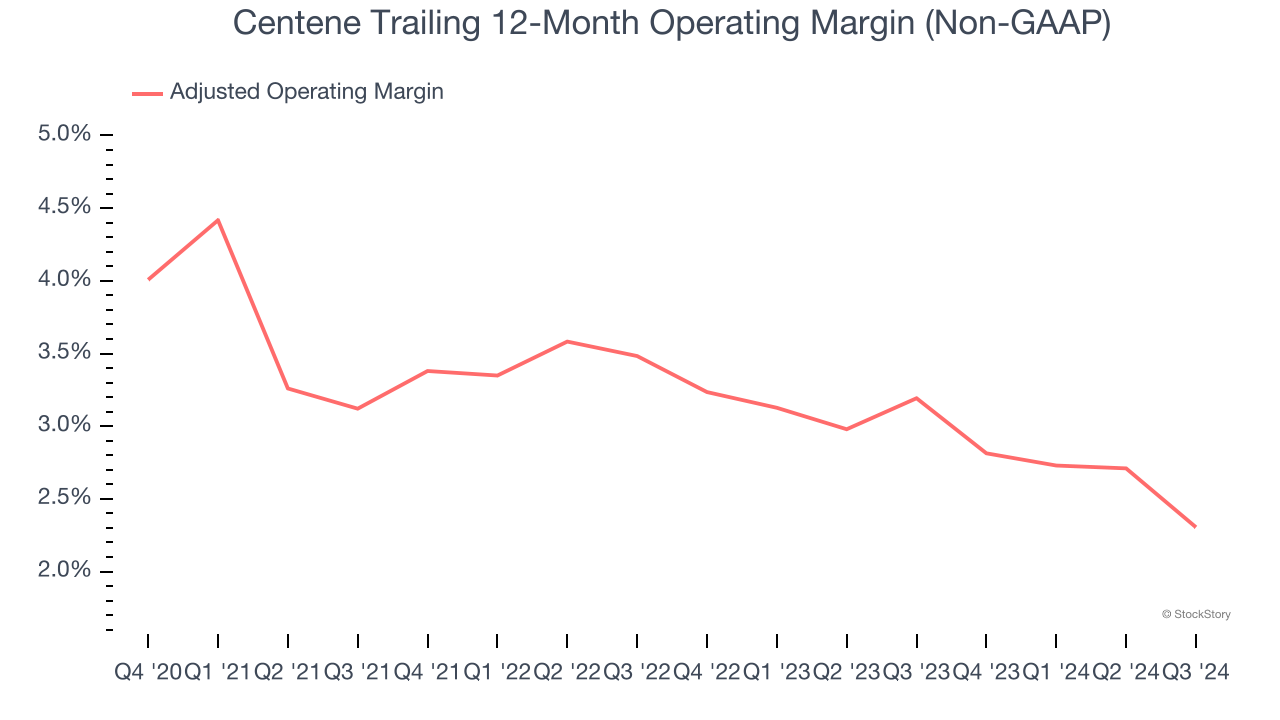
In Q4, Centene generated an adjusted operating profit margin of 1.3%, up 1 percentage points year on year. This increase was a welcome development and shows it was recently more efficient because its expenses grew slower than its revenue.
Earnings Per Share
Revenue trends explain a company’s historical growth, but the long-term change in earnings per share (EPS) points to the profitability of that growth – for example, a company could inflate its sales through excessive spending on advertising and promotions.
Centene’s EPS grew at a decent 7% compounded annual growth rate over the last five years. However, this performance was lower than its 16.9% annualized revenue growth, telling us the company became less profitable on a per-share basis as it expanded.
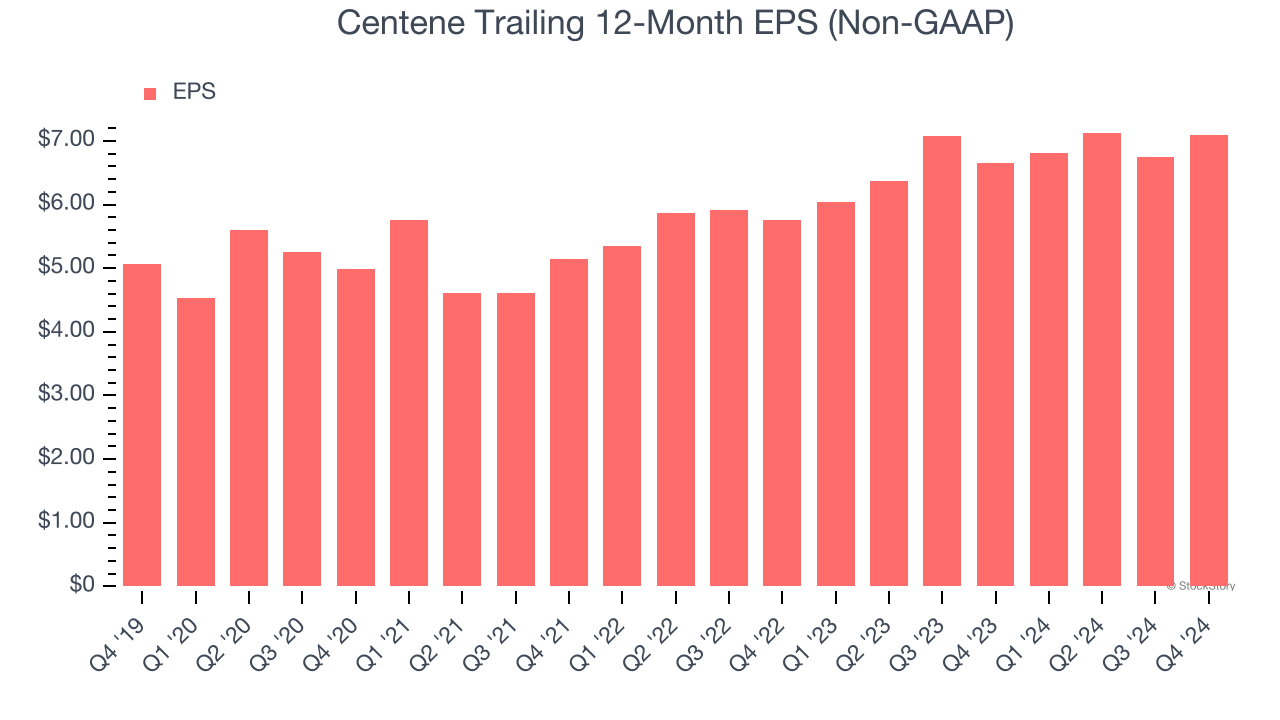
We can take a deeper look into Centene’s earnings to better understand the drivers of its performance. As we mentioned earlier, Centene’s adjusted operating margin improved this quarter but declined by 2 percentage points over the last five years. Its share count also grew by 18.9%, meaning the company not only became less efficient with its operating expenses but also diluted its shareholders. 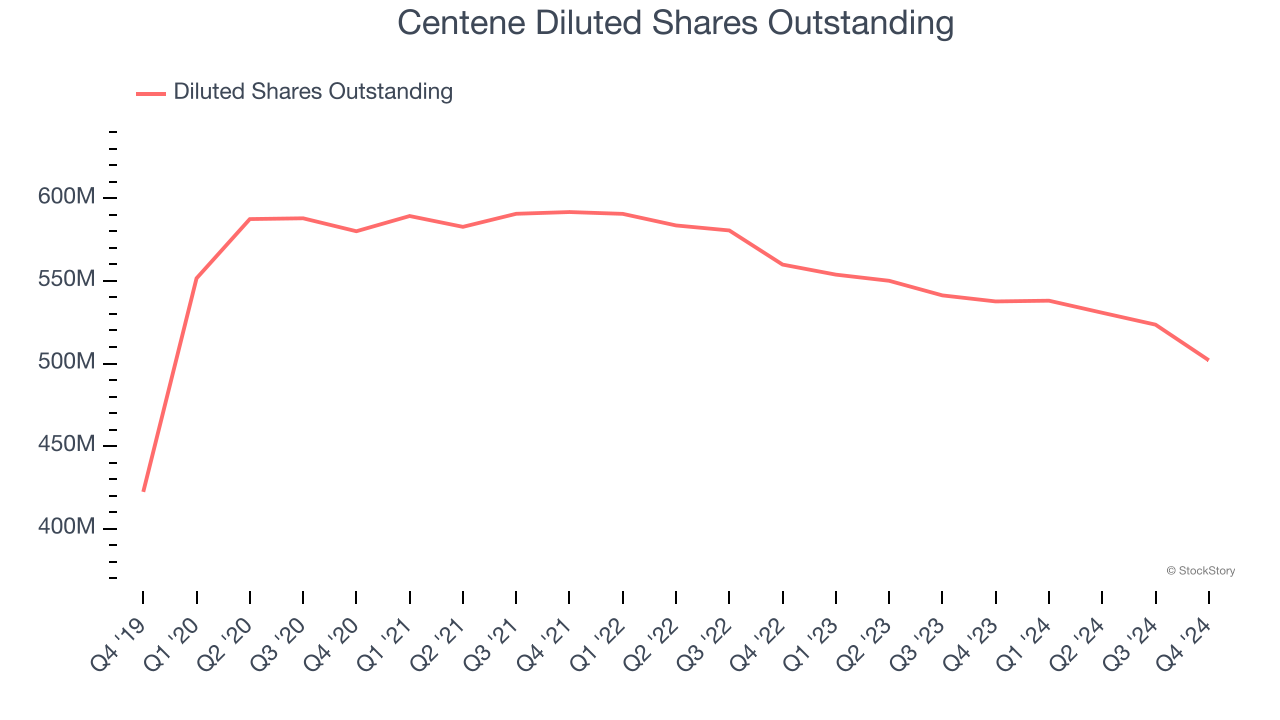
In Q4, Centene reported EPS at $0.80, up from $0.45 in the same quarter last year. This print easily cleared analysts’ estimates, and shareholders should be content with the results. Over the next 12 months, Wall Street expects Centene’s full-year EPS of $7.10 to grow 1.1%.
Key Takeaways from Centene’s Q4 Results
We liked that revenue and EPS outperformed Wall Street’s estimates. The company only gave a floor for full-year EPS guidance, and we consider the outlook roughly in line with expectations. Overall, we think this was a fine quarter. The stock traded up 1.3% to $65.66 immediately after reporting.
Centene may have had a good quarter, but does that mean you should invest right now? When making that decision, it’s important to consider its valuation, business qualities, as well as what has happened in the latest quarter. We cover that in our actionable full research report which you can read here, it’s free.














